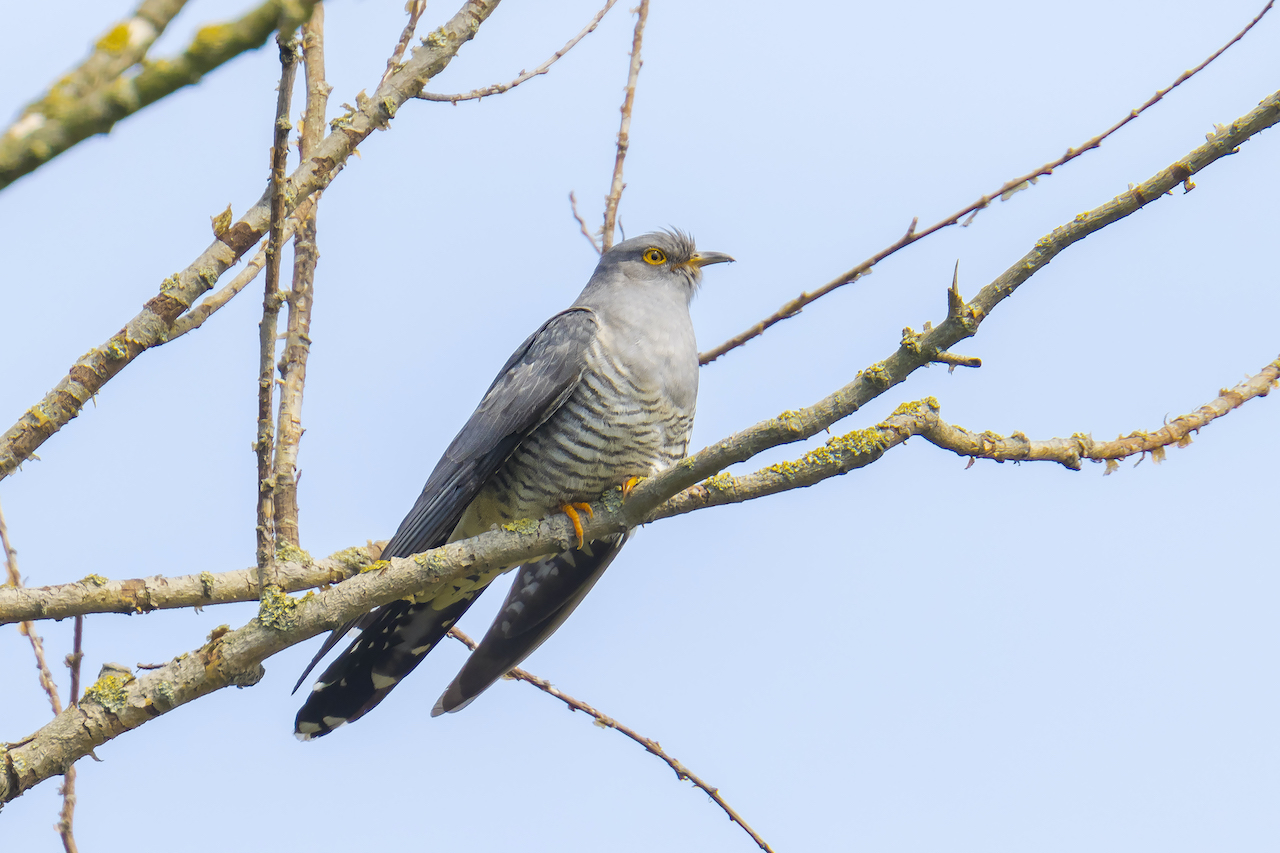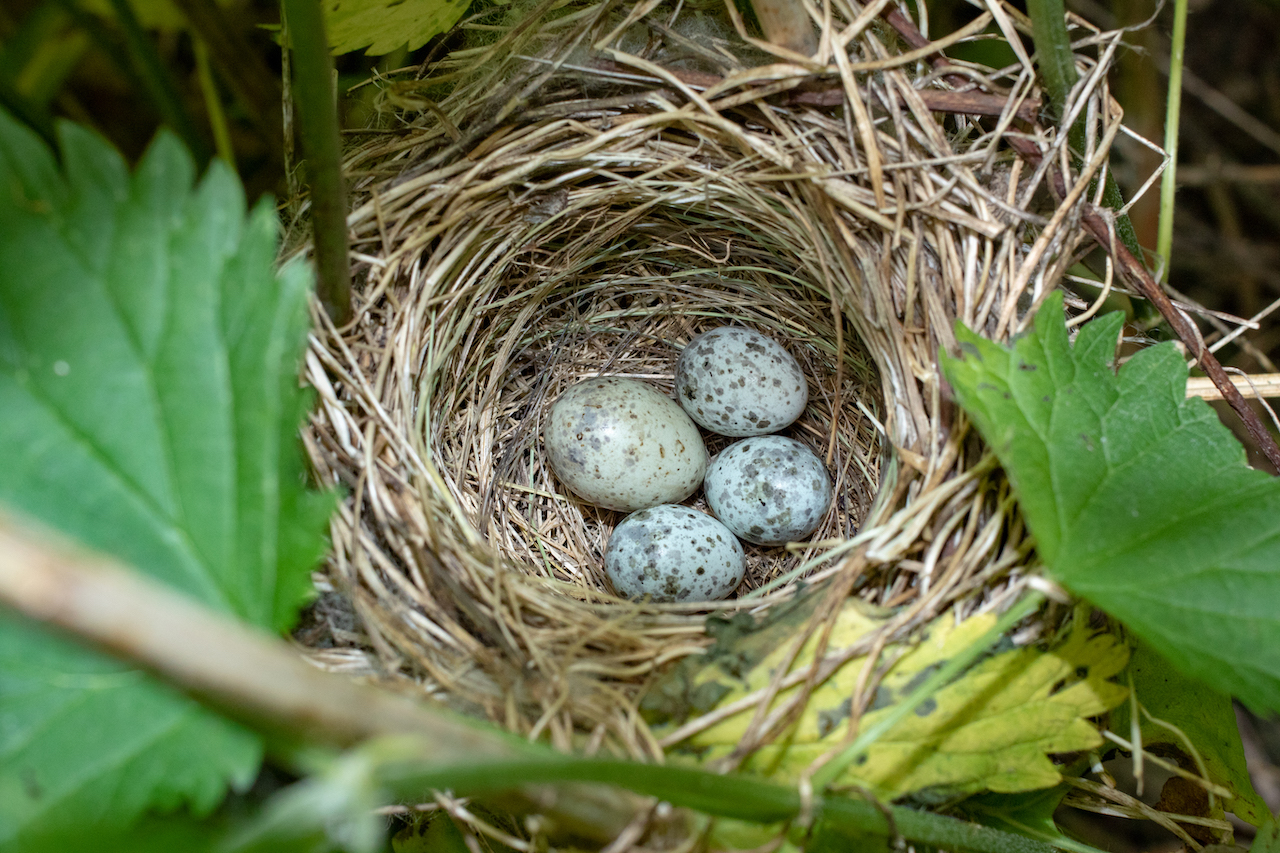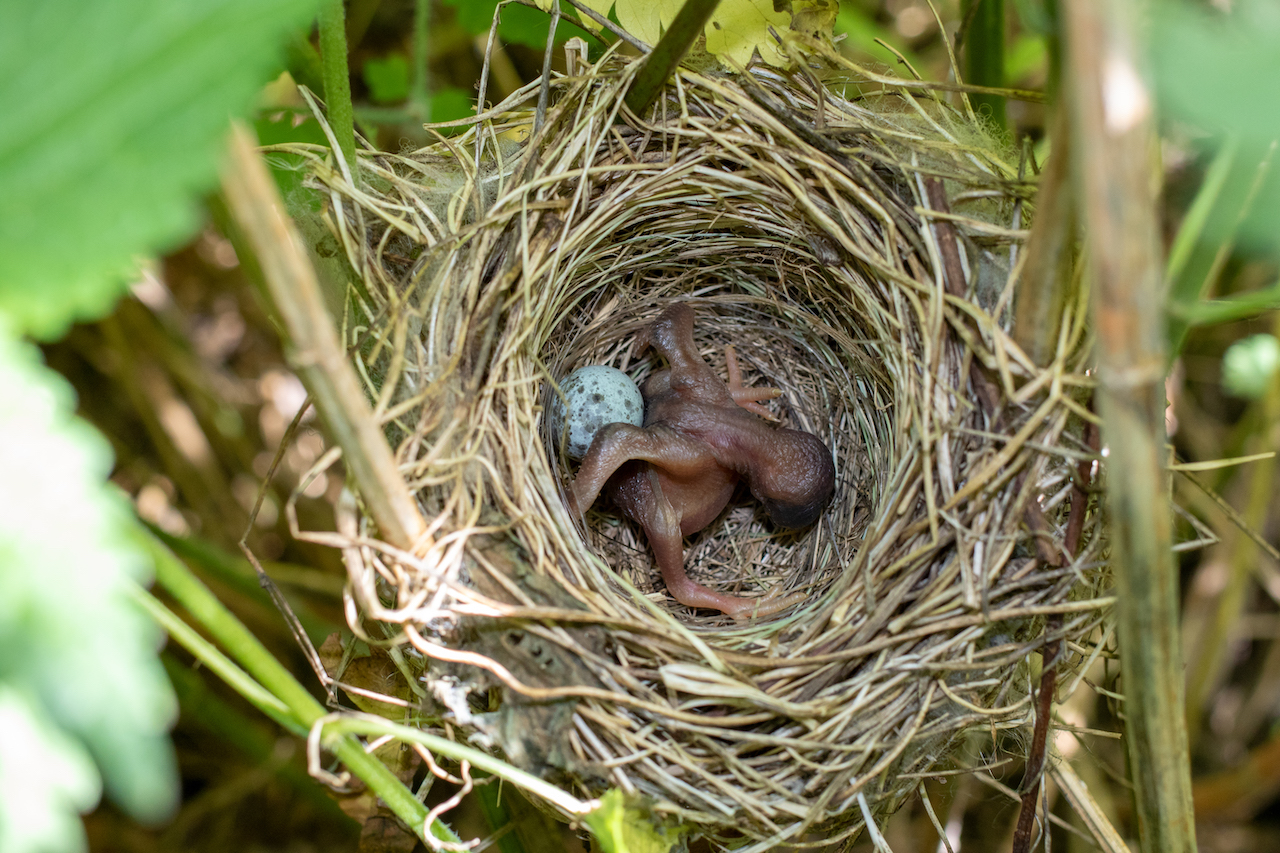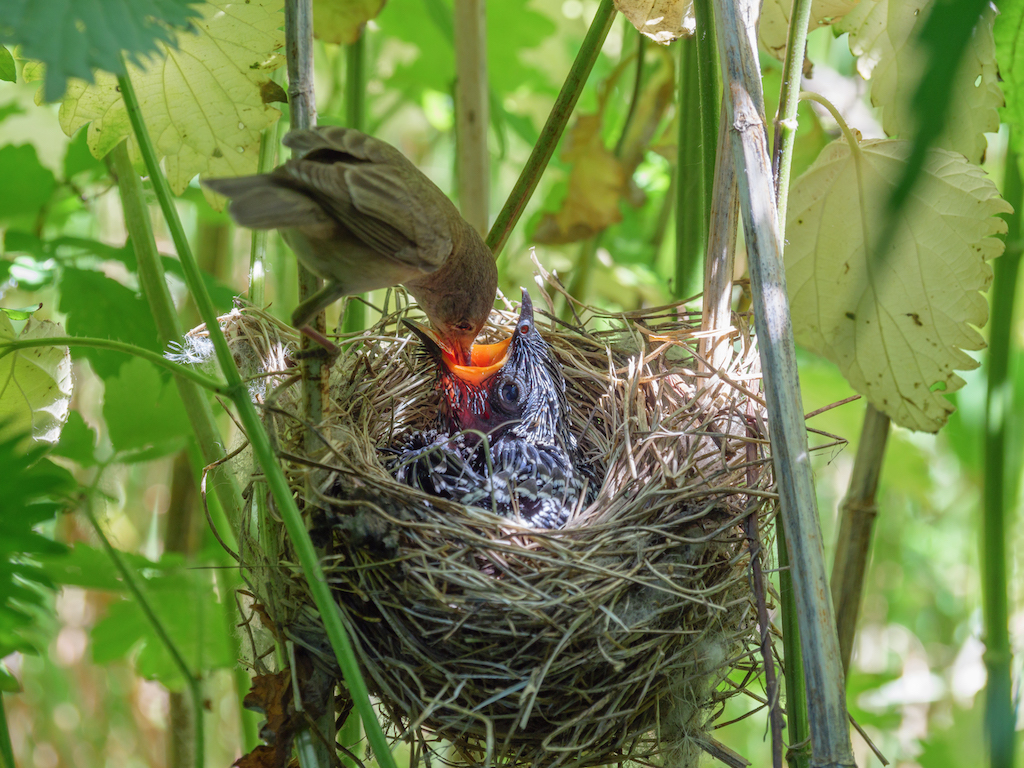How do cuckoos trick other birds?
Discover the cunning parenting techniques of cuckoos.

Cuckoos are masters of deception. When it comes to raising their young, these birds don’t need to build a nest, protect their eggs or feed their offspring. Instead, female cuckoos pass these roles onto unsuspecting victims.
Cuckoos are brood parasites, meaning they don’t raise their own young. They lay their eggs in the nests of other bird species, according to the Max Planck Society in Germany, tricking other birds into thinking the cuckoo eggs are theirs. Some of the main targets for cuckoos include dunnocks (Prunella modularis), meadow pipits (Anthus pratensis) and reed warblers (Acrocephalus scirpaceus), researchers reported in 2009 in the journal Bird Study.
How do they do it?
To pull off this cunning stunt, a female cuckoo watches her chosen nest from a vantage point, according to research published in 2003 in the journal Animal Behaviour. When the host parent leaves its nest in search of food, the cuckoo quickly lays her eggs among those already in the nest. Sometimes, she will kill and remove one of the existing eggs so that there aren’t too many eggs in the nest, according to research published in the Encyclopaedia of Biodiversity, 2001.

There are 150 species of cuckoos listed in the IOC World Bird List, all of which belong to the Cuculidae family. They are medium-size birds averaging 13 inches (33 centimeters) long and weighing about 3.7 to 4.5 ounces (105 to 130 grams). They often have gray or brown backs and barred bellies, and have long tails, according to the Woodland Trust.
When a cuckoo hatches and begins to grow in a host’s nest, it can look obvious to an onlooker that the cuckoo is not the same species as its foster parent. Sometimes, a young cuckoo is six times bigger than the host parent, but it continues to receive food, according to research published in 2018 in the Proceedings of the Royal Society B.
The cuckoo imposter is usually the only hatchling that a host parent has to care for. This is because the young cuckoo gets rid of all the other eggs in the nest. It will usually hatch before the other eggs, after around 11 days in the nest. Then, it will carry the other eggs on its back, one by one, and throw them over the edge of the nest, according to BBC Wildlife.
A cuckoo’s new, non-biological parent will continue to treat it as one of its own chicks. After 20 days, the cuckoo will leave the nest but will still receive food from its former host, according to the Woodland Trust.
Get the world’s most fascinating discoveries delivered straight to your inbox.

When it goes wrong
Although cuckoos’ tricks have a high success rate, some host birds are less easily fooled. If a female cuckoo is spotted laying her eggs in the wrong nest, or the bird becomes aware that one egg is different, cuckoo eggs can be attacked. The host bird pierces the shell of the imposter egg and throws it out of the nest, according to The University of Illinois of Urbana-Champaign (UIUC). In other instances, the nests are abandoned and the cuckoo is not fed.
Cuckoos sometimes lay their eggs outside of the hosts’ nests, according to a 2019 journal article published by The Royal Society. If an egg looks similar to the host’s eggs, the host can retrieve the seemingly misplaced egg and place it in the nest itself.
Sometimes, a cuckoo chick will be rejected by its host after hatching, because of the cost of raising the cuckoo. An example of this is when the cuckoo is much larger than its unsuspecting new parent, according to research published in the Journal of Zoology in 2011. Feeding the cuckoo will use up much more of the host bird’s energy. If the chick’s demands are much higher than the host would expect from its own species, the cuckoo can be abandoned at this later stage.

Mimicry and trickery
To infiltrate a nest and successfully evade their victims’ defenses, cuckoos have evolved effective disguising features. One of the main adaptations is egg coloration. Cuckoos have evolved to produce eggs that are similar in color to their main hosts, according to the BBC. This reduces the chances of eggs being attacked in the nest.
Around the time of laying their eggs, female cuckoos have been known to distract the host birds by producing a noise similar to Eurasian sparrowhawks (Accipiter nisus), according to an article published in the Journal of Experimental Biology in 2017. This is to alert the birds to potential dange, distracting them from the nest. This gives the cuckoo enough time to lay her eggs and to make her escape, unspotted.
Additional resources
- Find out where and when you can see cuckoos at the RSPB website
- Watch a lecture about cuckoo behaviour: The Royal Society
- Explore the behaviour of other bird species in this book: How to Read a Bird

Ailsa is a staff writer for How It Works magazine, where she writes science, technology, history, space and environment features. Based in the U.K., she graduated from the University of Stirling with a BA (Hons) journalism degree. Previously, Ailsa has written for Cardiff Times magazine, Psychology Now and numerous science bookazines. Ailsa's interest in the environment also lies outside of writing, as she has worked alongside Operation Wallacea conducting rainforest and ocean conservation research.


